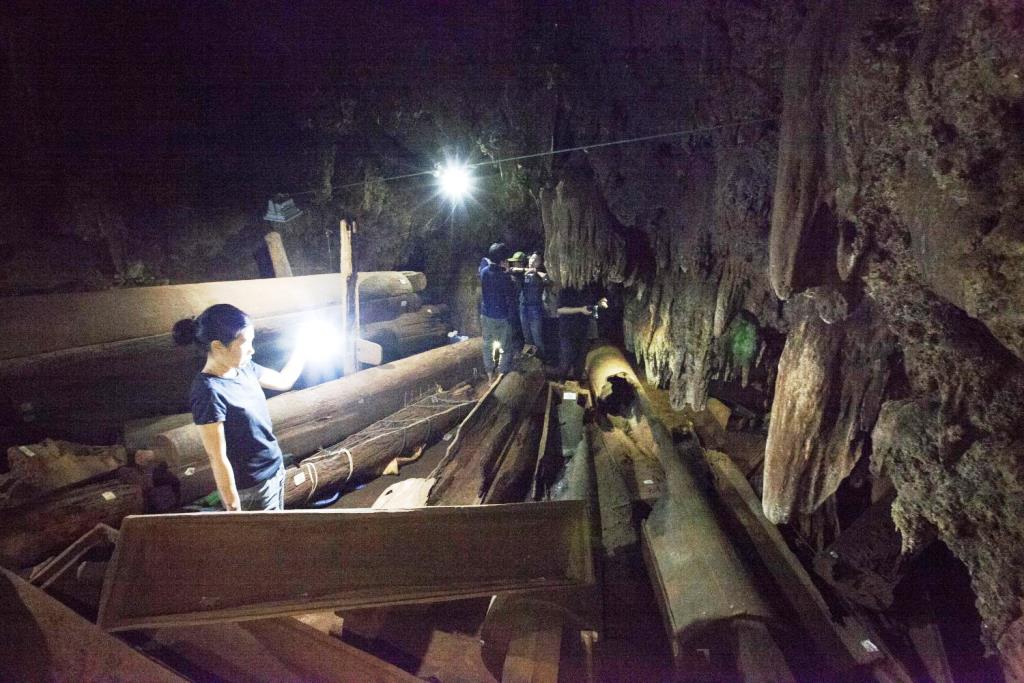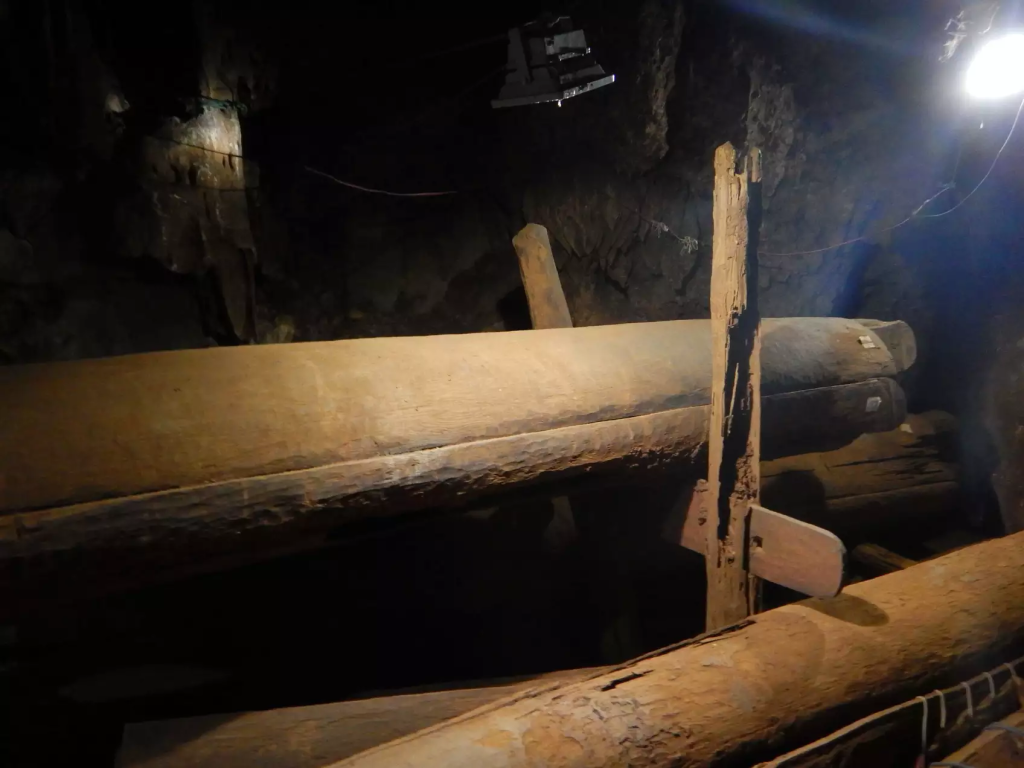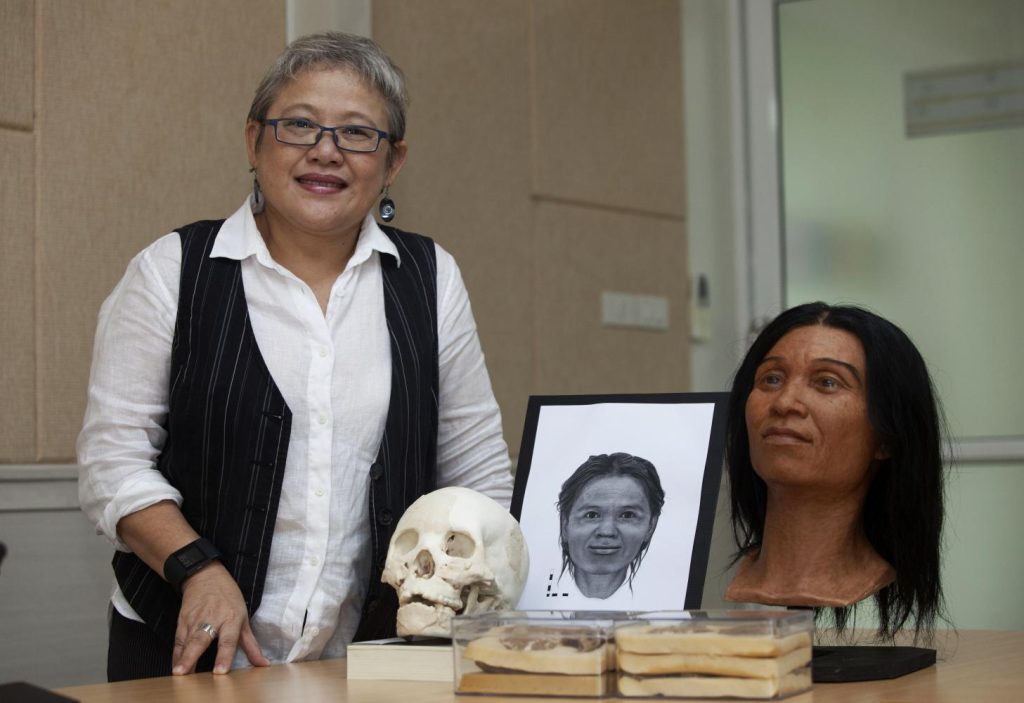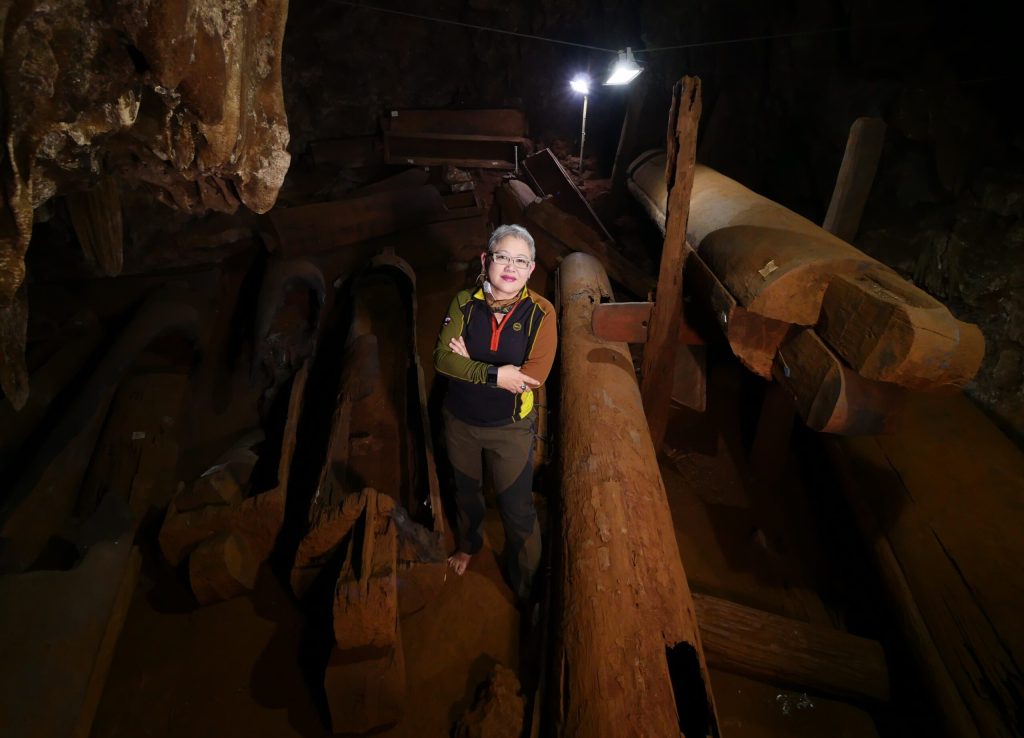Archaeologists have reported DNA analysis of 33 pieces of ancient human bones and teeth discovered at Iron Age Log Coffin sites in Mae Hong Son province in northern Thailand reveals a relationship between prehistoric communities and present ethnic groups in the region.
Rasmi Shoocongdej, a lecturer at Silpakorn University’s Faculty of Archaeology and the director of the Prehistoric Population and Cultural Dynamics in Highland Pang Mapha Project, stated that her team has been surveying a prehistoric cave community in Mae Hong Son since 1998 to learn more about prehistoric migrations in the area.
The highlands of Pang Mapha served as a mortuary for the area’s ancient humans, who practiced the “Log Coffin” culture. Large coffins carved from teak wood dating back 1,000 to 2,300 years have been uncovered in approximately 40 caves and rock shelters throughout the region.
“While previous studies focused on the cultural development of Log Coffin-associated sites, the origins of the practice, connections with other wood coffin-using groups in Southeast Asia and the social structures in the region remained unstudied,” according to Prof. Rasmi.
“So, we present genome-wide data from 33 individuals from five Log Coffin culture sites to study genetic ancestry profiles and genetic interconnectedness,” she went on to say.
The team collaborated closely with the Max Planck Institute for Evolutionary Anthropology in Leipzig, Germany, to investigate DNA from 33 ancient bones and teeth discovered at the five sites, she explained.
The findings revealed new linkages between individuals from the five sites, she said, and a report on the discovery was published in Nature Communication in December. She added the discovery could lead to a greater knowledge of ethnic groupings in Asia, including Thailand.
“It shows a migration route humans took during the prehistoric period,” she went on to say.
According to her, Pang Mapha ancient humans have a similar DNA sequence to Neolithic people from China’s Yangtze and Yellow River Valleys. She believes they travelled from China to the western Salween River in Thailand.
“Our research examines the relationship between humans and their environments in the seasonal tropics,” she went on to say.
“Our [mission] is the exploration of the social structure of these prehistoric communities and explaining their connections with other pre-Neolithic and post-Neolithic groups in this region.”
Wibhu Kutanan, a biologist from Naresuan University, explained that studying the DNA of ancient humans is difficult since bones and other genetic resources decay with time.
However, Assoc Prof Wibhu stated that the team was fortunate to find 33 “perfect” fragments among the 66 that were submitted to a facility in Germany for analysis. The samples were good enough to execute identical-by-descent block analysis, a procedure used to trace complicated biological patterns in the region, he said.
He pointed out that the team was among the first to employ the technology in Southeast Asian Archaeogenetics studies.
“This is a first in the Southeast Asia region to have a DNA test to identify individual relations in ancient times,” he said. “The outcome is incredible since we have discovered family relationships, including twins, half-siblings, grandfathers, and grandchildren.
“We have also seen great-grandfather relations between the Yappa Nhae II cave and the Tham Lod cave [in Mae Hong Son],” he went on to say.
The study also found that ancient Pang Mapha individuals shared DNA characteristics with Lava, Mon, and Padong Karen ethnic groups.
The findings are significant since log coffins were also used by prehistoric peoples in Southeast Asia, he said, adding that the investigation could assist explain cultural dynamics and demographic contacts in Southeast Asia and other places.
Prof Rasmi stated that the team will investigate archaeological sites in the Central Plains provinces of Lop Buri and Suphan Buri, which are thought to have hosted significant prehistoric communities.
The project aims to locate “the missing piece of a jigsaw puzzle” that will redefine our understanding of ancient Thai civilization from the Dvaravati era (6th-11th century) to the present Rattanakosin period.
Thailand Plants Trees to Combat Climate Change
⚠ Article Disclaimer
The above article is sponsored content any opinions expressed in this article are those of the author and not necessarily reflect the views of CTN News









